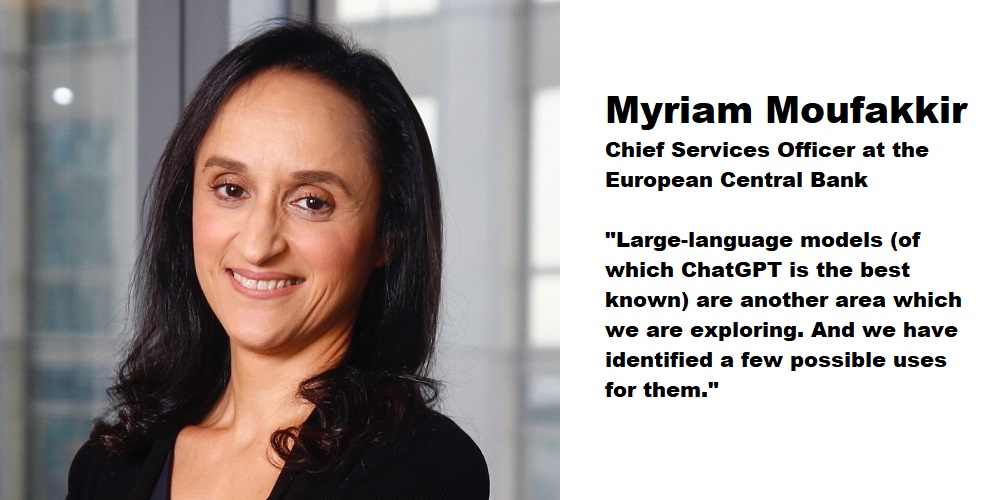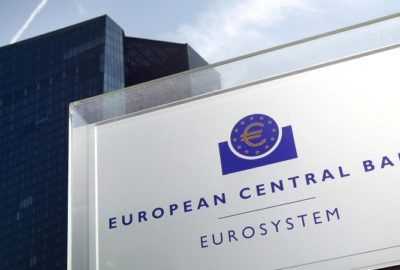Careful embrace: AI and the European Central Bank

an article written by Myriam Moufakkir – Chief Services Officer at European Central bank
From playing chess to piloting drones – machines have become much smarter and play a role in many areas of our lives. So why not use artificial intelligence for central banking? We are currently using this new technology for some tasks and exploring its future use for others.
AI offers new ways for us to collect, clean, analyse and interpret data, so that the insights can feed into the work of areas like statistics, risk management, banking supervision and monetary policy analysis.
We are exploring the opportunities and challenges of AI together with other central banks in the European System of Central Banks (ESCB) and the national competent authorities in the Single Supervisory Mechanism, as well as through initiatives such as the Bank for International Settlements’ Innovation Hub. Here are a few examples of what we are doing.
What kinds of AI does the ECB use?
The first initiative concerns the data we use. Our statisticians collect, prepare and disseminate data from over ten million legal entities in Europe, which are classified by institutional sector (e.g. financial institutions, non-financial corporations or the public sector). We need these classifications to have the right data to support our decision-making. Doing this manually, however, is very time-consuming. Machine learning techniques allow us to automate the classification process, meaning that our staff can focus on assessing and interpreting these data.
The second initiative aims to deepen our understanding of price-setting behaviour and inflation dynamics in the EU. Today, by applying web scraping and machine learning, we are able to assemble a huge amount of real-time data on individual product prices. One of the challenges, however, is that the data collected are largely unstructured and not directly suitable for calculating inflation. Together with economists and researchers at the other euro area central banks – via the Price-setting Microdata Analysis network – we are therefore exploring how AI can help us structure these data to improve the accuracy of our analyses.
The third initiative is in the area of banking supervision. To do their job, our supervisors analyse a broad range of relevant text documents (e.g. news articles, supervisory assessments and banks’ own documents). To consolidate all of this information in one place, our colleagues have created the Athena platform which helps supervisors find, extract and compare this information. Using natural language processing models trained with supervisory feedback, the platform supports supervisors with topic classification, sentiment analysis, dynamic topic modelling and entity recognition. Supervisors can now collate these kinds of enriched texts within seconds, so they can more quickly understand the relevant information – instead of spending time searching for it.
What else do we have to keep in mind?
Large-language models (of which ChatGPT is the best known) are another area which we are exploring. And we have identified a few possible uses for them. They could be used to write initial drafts of code for experts for use in analysis, or to test software more quickly and thoroughly. These models can also analyse, summarise and compare the documents prepared by the banks we supervise. This supports the work of our supervisory teams. The technology is also capable of helping to more quickly prepare summaries and draft briefings, which can assist colleagues across the bank in policy and decision-making activities. A large language model can also help improve texts being written by staff members, making the ECB’s communication easier to understand for the public. Relatedly, we have used neural network machine translations for a while now to help us communicate with European citizens in their mother tongues.
Naturally, we are cautious about the use of AI and conscious of the risks it entails. We have to ask ourselves questions like “how can we harness the potential that large language models offer in a safe and responsible manner?”, and “how can we ensure proper data management?”. Working in close cooperation with other ESCB institutions, we are looking at key questions in the fields of data privacy, legal constraints and ethical considerations (such as fairness, transparency and accountability).
With those considerations in mind, we will continue to investigate the possibilities and challenges of using AI. The examples above are only the tip of the iceberg. By putting in place the appropriate governance, coordination, infrastructure and investment, we will pull together the various strands of our work on AI and accelerate its adoption across our organisation. This will allow us to harness the technology’s full potential and allow us to remain a modern and innovative central bank: an ECB that embraces – and continues to embrace – the future.
Dariusz Mazurkiewicz – CEO at BLIK Polish Payment Standard
Banking 4.0 – „how was the experience for you”
„To be honest I think that Sinaia, your conference, is much better then Davos.”
Many more interesting quotes in the video below:











